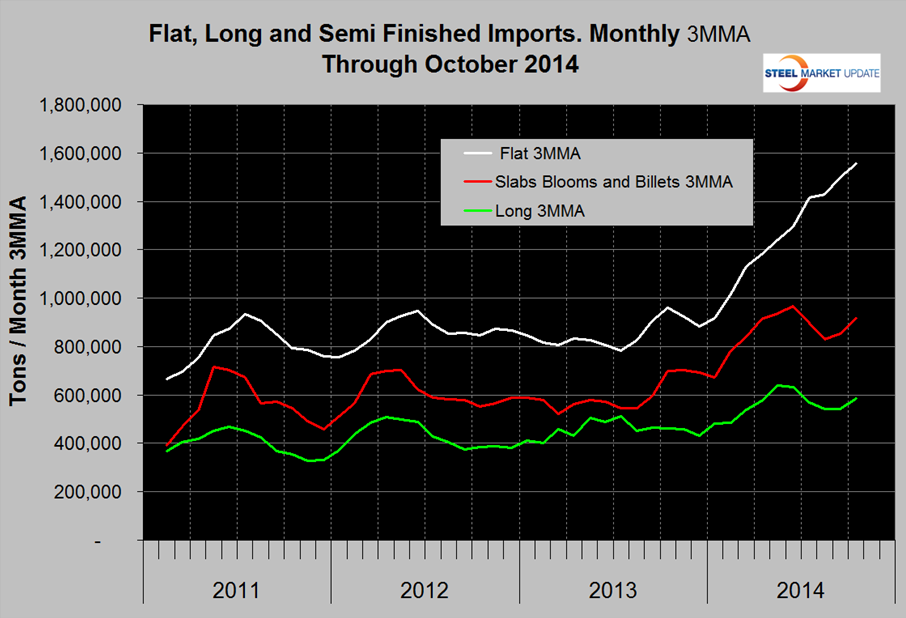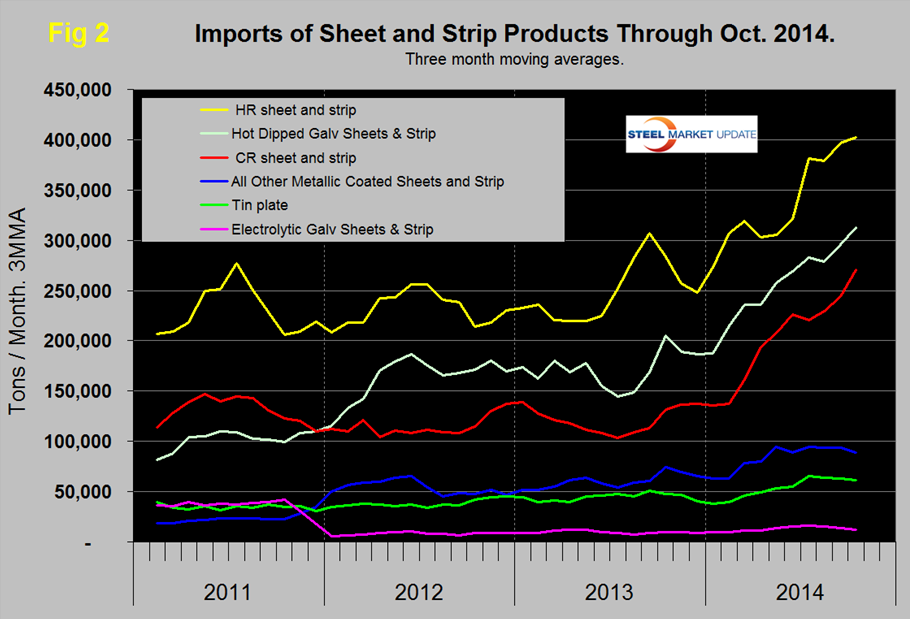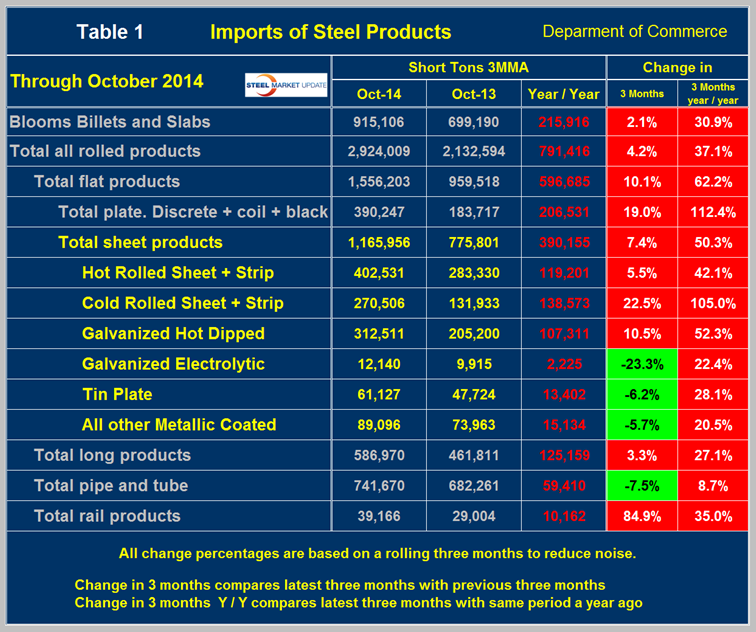Prices

November 12, 2014
Flat, Long, and Semi-Finished Imports through October 2014
Written by Peter Wright
Licensed data for October was updated on November 4th through the Steel Import Monitoring System of the US Department of Commerce. The SMU publishes several import reports ranging from this very early look using licensed data to the very detailed analysis of final volumes by district of entry and source nation which is published in our premium product. The early look, the latest of which you are reading now has been based on three month moving averages (3MMA) using October licensed data, and September and August final data. We recognize that the license data is subject to revisions but believe that by combining it with earlier months data in this way gives a reasonably accurate assessment of volume trends by product as early as possible. The main issue with the license data is the month in which the tonnage arrives. We are currently investigating the relationship between licensed tonnage and month of arrival and will publish our summary for the first nine months of 2014 in this newsletter in the next week. Total rolled product imports in the month of October were 3,245,460 short tons which was the highest volume since July 2006.
Figure 1 shows the 3MMA through October licenses for semi-finished, flat and long products. Flat includes all hot and cold rolled sheet and strip plus all coated sheet products plus both discrete and coiled plate. The import surge is continuing for flat products but has abated somewhat for long products.
Figure 2 shows the trend of sheet and strip products since January 2011 as three month moving averages. Hot rolled and HDG had a slight respite in three months through August but have since continued to surge. Cold rolled currently has the fastest trajectory of increase. All other metallic coated (mainly Galvalume) tin plate and electro-galvanized have declined slightly since mid-year. In the single month of October hot rolled sheet and strip licenses were 470,188 tons, HDG was 334,951 and cold rolled came in at 306,923 tons.
Table 1 provides a detailed import analysis and compares the average monthly tonnage of the three months through October, with both the same period last year and with May through July 2014. The total tonnage of hot worked products averaged 2,924,009 tons per month in three months through October, up by 37.1 percent year over year and by 2.1 percent in concurrent three month periods. Year over year semi-finished imports were up by 30.9 percent, flat rolled products were up by 62.2 percent, long products fared better, up by 27.1 percent. Table 1 shows the tonnage and percent change for all the major product groups and for sheet products in detail. The average monthly tonnage of sheet products in three months through October increased by 390,155 tons or 50.3 percent year over year.










